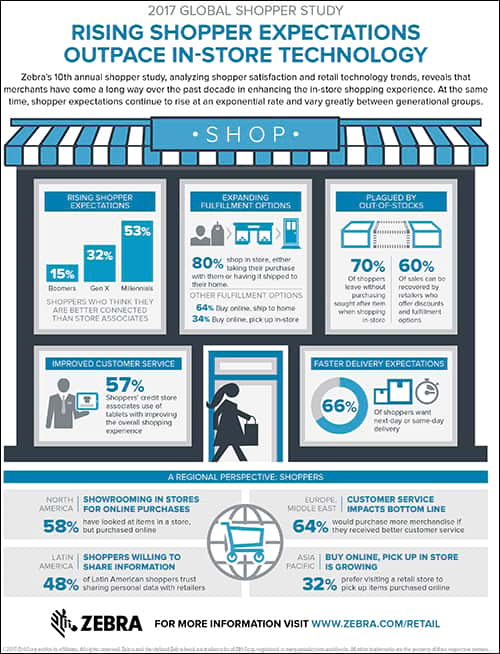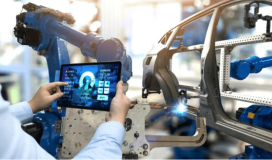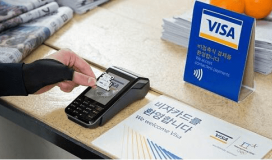Zebra Technologies' "2017 Global Shopper Study," which analyzes shopper satisfaction and retail technology trends, found that satisfaction at physical stores—while higher than it was ten years ago—is still low (little more than half). What's more, at least half of all shoppers said they believe they are better connected to product information via their smartphones than store associates are.
According to Zebra, 44 percent of surveyed shoppers said they are dissatisfied with the availability of employees or the level of customer service they receive in stores—approximately 10 percentage points higher than in the past. In addition, online shoppers indicated dissatisfaction in customer service and returns at a rate of about 54 percent.
Zebra's 10th annual study surveyed nearly 7,500 shoppers from North America, Latin America, the Asia-Pacific region, Europe and the Middle East. These individuals were interviewed in September 2017 by online research partner Qualtrics.
The goal, explains Tom Moore, Zebra's industry lead for the retail and hospitality industry, was to better understand retailers' impact on in-store shopper satisfaction, as well as what shopper pain points are, how consumers use mobile technologies and their views regarding emerging technologies.
"This gives us an external point of view to align our investments and messaging with," Moore says. The survey was targeted to benefit retailers, as well as Zebra, in planning solutions to meet the needs of consumers. "We can tie the survey information back to what we hear from retailers," he states, adding that retailers typically seek solutions to the very problems consumers most often indicated facing during the survey.
Since it was first released 10 years ago, Moore reports, the survey has been measuring most of the same metrics. "In that way," he says, "we are seeing what the journey has been over the past 10 years" for the retailer in-store market. Some improvement has been notable, Moore notes, such as the rate of dissatisfaction.
Overall, consumers in the past have expressed 63 percent dissatisfaction with their in-store shopping experience when it came to customer service, compared to the current 44 percent. "But there are still opportunities out there for improvement," Moore says. The survey, in fact, found that half of all respondents felt positive about shopping at stores, and believed technology is helping retailers improve the experience.
Throughout the decade during which the study has been conducted, several obstacles to retail in-store sales have continued to exist. This year, for instance, half of all millennial shoppers have proven to be better connected via mobile phone access than retail associates at stores. In fact, among all age groups, about 44 percent said they were better connected than workers, which is up from about 34 percent in 2015 and 32 percent the year prior.

Although retailers continue to invest in their physical stores, as well as providing sales associates with the technology tools they need, shopper expectations continue to grow. For example, two-thirds of shoppers indicated that they prefer next- or same-day delivery. "Fulfillment expectations have heated up in the last 24 months," Moore reports, as shipping times for online shopping have been reducing.
The respondents indicated, at a rate of 58 percent, that they have sometimes conducted a practice known as "show rooming," in which they have looked at items at a store but then purchased them online. Meanwhile, out-of-stocks remain the greatest cause of lost sales. Seventy percent of respondents said they have left a store without purchasing what they sought. The study finds that retailers could recover six in 10 of these sales losses by offering discounts or alternative fulfillment options to customers, such as having a product shipped to their home.
More info visit rfidjournal.com



